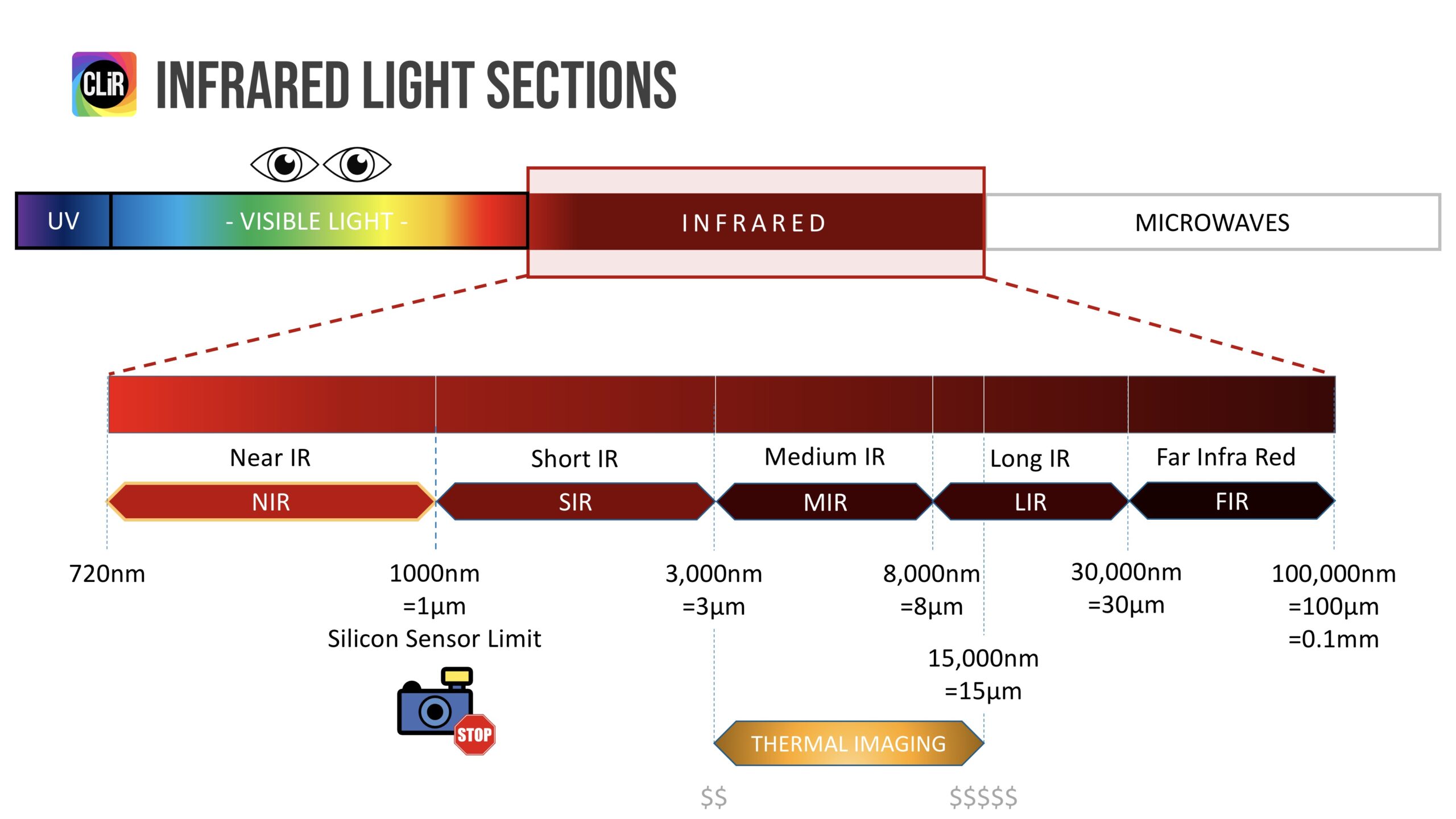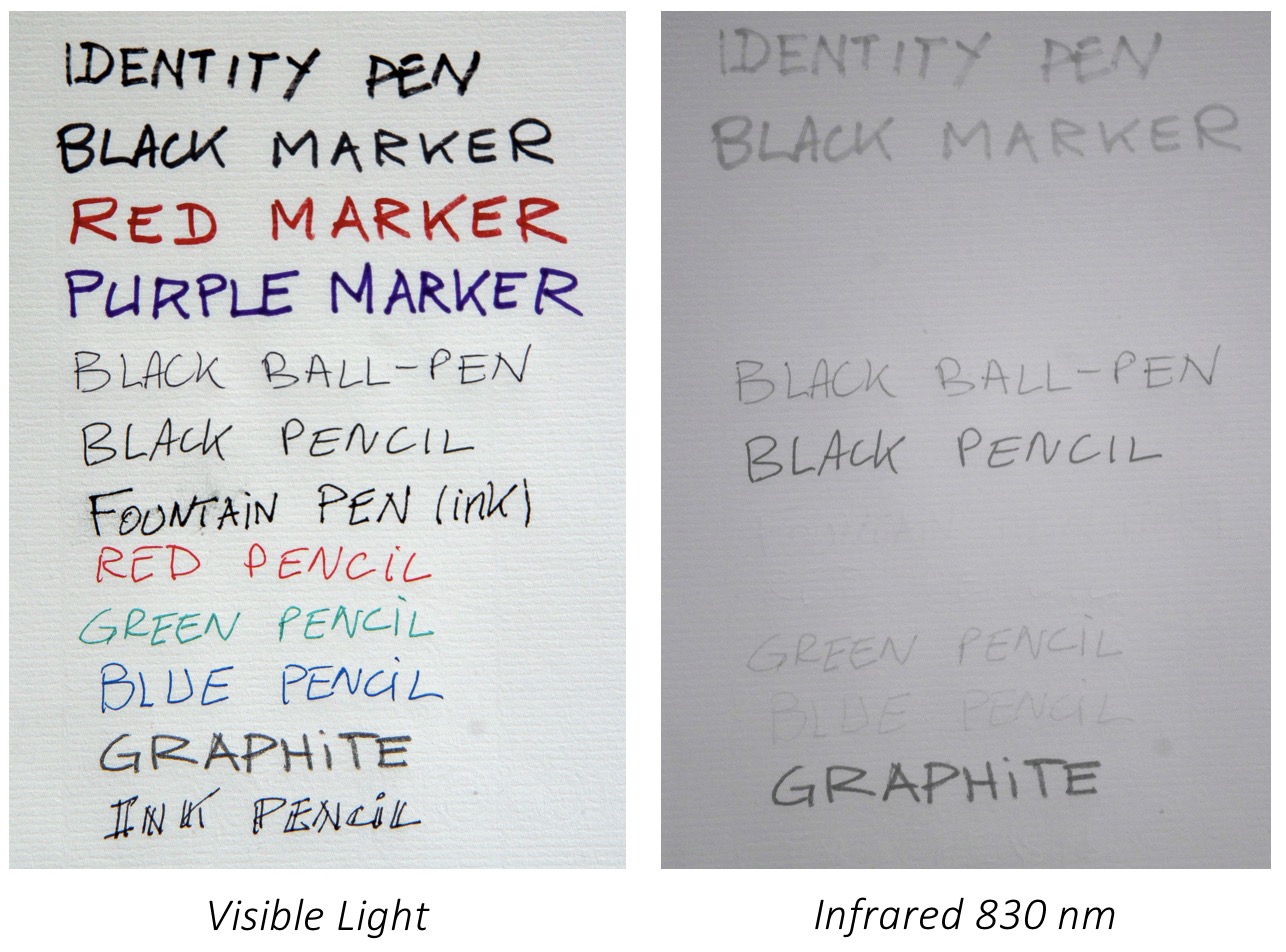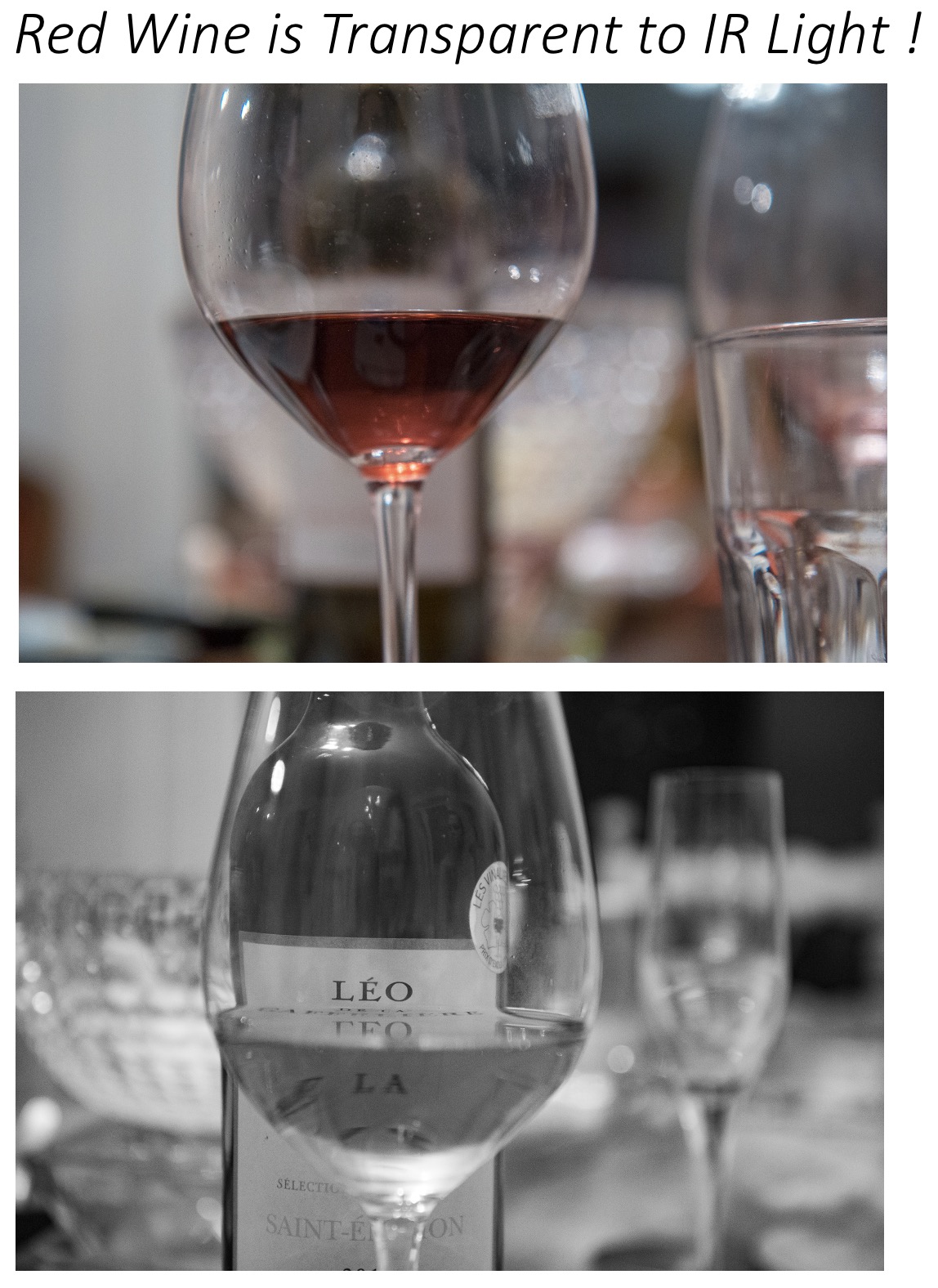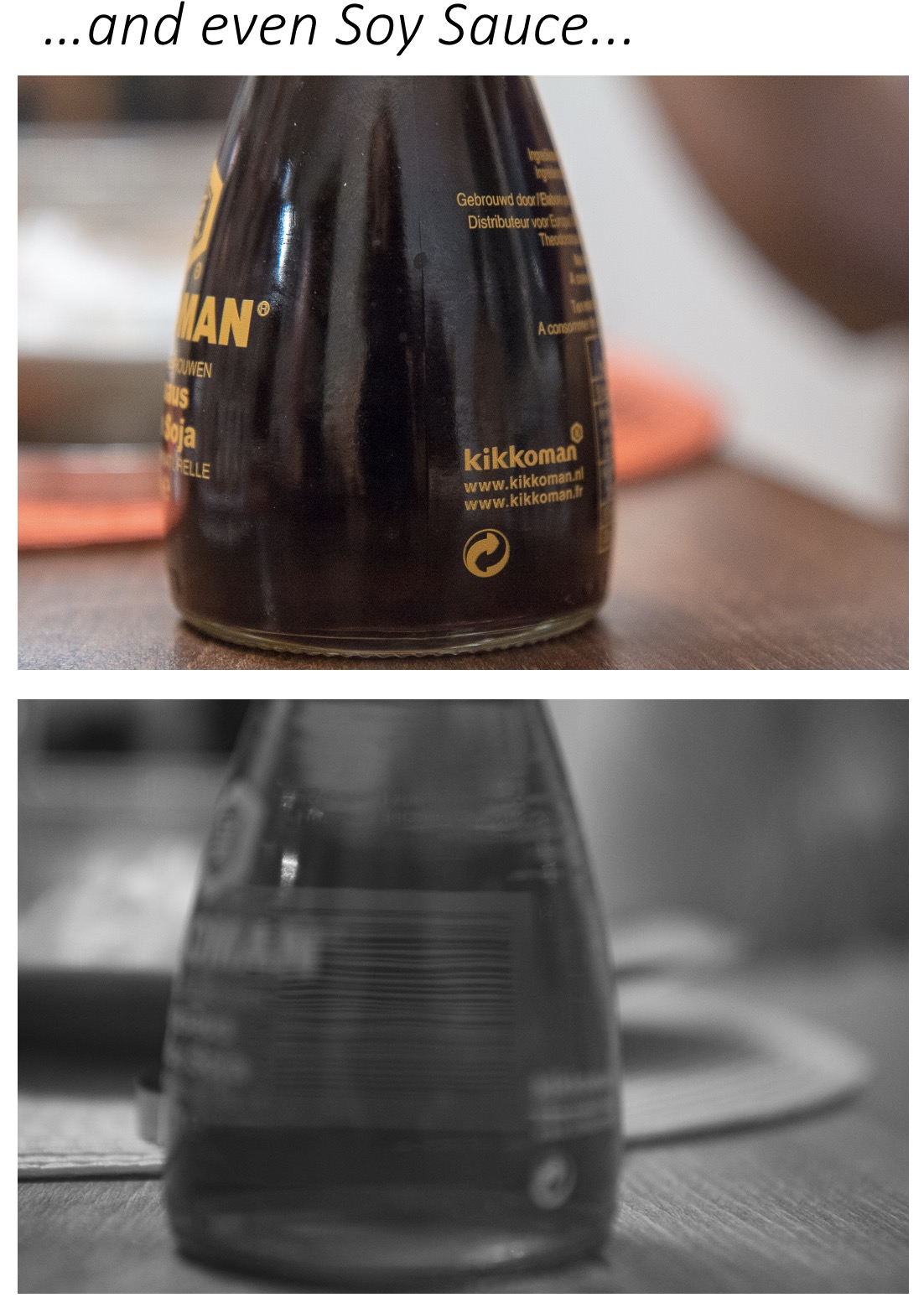
As an introduction, allow me to write a few lines on what is considered Human Vision or Visible Spectrum, and how the Infrared Spectrum sits just on it’s right side. For us humans, infrared is invisible. I’ll show you some Infrared Fun Facts, but first let’s talk about light first.
Words on “Light”
As shown and explained in the CLiR Mastery Course Module 1, Human Color Vision is a tiny fraction of light or more generally, electromagnetic fields that surrounds us. Typically we see colors from 400nm to 700nm.

Words on “INFRARED LightS”
To keep things pretty simple: when talking about Infrared light, there are five families:
- Near Infrared “NIR”
- Short Infrared “SIR”
- Medium Infrared “MIR”
- Long Infrared “LIR”
- Far Infrared “FIR”
As shown and explained in the CLiR Mastery Course Module 1, digital infrared photography is focused (no pun intended) on the Near Infrared section. Typically, starting at around 700 nm, up to 1000 nm (or 1 millionth meter) where the Silicon Sensor limit is defined by its conception and design.
This NiR section is what we’re interested in.
As humans, this range of Light is completely invisible for us. Capturing invisible light and shooting Infrared, or Near Infrared I should say, will open so many doors to see our surroundings in a completely new way!

INFRARED FUN FACTS
Some inks are invisible when shot in Infrared, especially when using an almost “Infrared only” filter such as the 830nm filter.




Paint and pigments, when shoot with infrared filters, shows and reveal things we cannot see! This Moroccan ashtray looks completely different. In visible light, it looks really dark, almost black. Under the same lighting conditions (sun), using a 590nm filter on my full spectrum camera reveals more details in the paintings and colors. When using a 830nm infrared filter, you can see even more painting details.
Shooting with infrared filters is still used for forensic enquiries and forgery detection!

Pretty cool, huh?
Well that’s just a tiny snowflake on the tip of a giant iceberg
Through a series of posts here in the CLiR Blog, I hope to take you through the unique world of Infrared Digital Photography.

